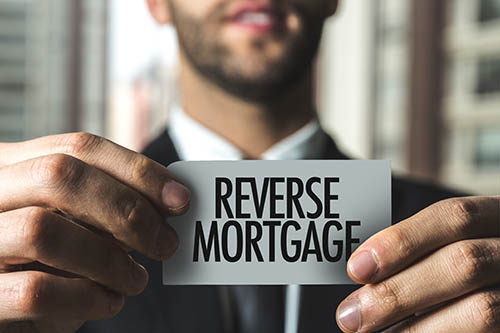Reverse Mortgages 101: How This Unique Financial Product Can Make Your Life Easier
 If you’ve been in your home for a while and have considered other loan options, you may have heard the term reverse mortgage without being aware of how this product can benefit you. While this type of mortgage works for those who have a high amount of equity in their home, here are the details on reverse mortgages and how this product may work for you.
If you’ve been in your home for a while and have considered other loan options, you may have heard the term reverse mortgage without being aware of how this product can benefit you. While this type of mortgage works for those who have a high amount of equity in their home, here are the details on reverse mortgages and how this product may work for you.
What’s A Reverse Mortgage?
The reverse mortgage was created in 2009 as the Home Equity Conversion Mortgage for Purchase (HECM) and is something that can be used by those who are older than 62. As this type of mortgage does not require the homeowner to pay monthly mortgage payments, it enables those who use it to repay their loan after they move out or pass on. If the cost of maintaining your home is manageable and you don’t plan on moving, this can be a useful option.
The Requirements For Reverse Mortgages
Beyond the age requirement, those who want to utilize this product need to own their current property or have a high amount of equity in it. They must have the ability to pay any insurance and property tax on the home, and they must comply with the standards that are set by the Federal House Administration (FHA). This means that applicants may require documentation like bank statements to confirm their financial security, or even pay stubs if they are still receiving a monthly income.
The Pros And Cons
A reverse mortgage can be an option for those who don’t want to make a regular monthly payment on their home and would like to turn it into a source of additional funds while still owning it. While this can be an option to for those who want to stabilize their monthly expenditures, it’s also important to be aware that there can be higher costs associated with a reverse mortgage. In addition to a higher interest rate, reverse mortgages incur a higher overall interest payment since monthly payments are deferred until the loan is paid in full.
There are many types of mortgage products out there on the market, but you may not be aware that a reverse mortgage or the Home Equity Conversion Mortgage for Purchase (HECM) can be a useful option for many seniors. If you are wondering if this option is right for you, contact your trusted mortgage professional for more information.

 If you’ve studied the real estate market recently, you’ve probably heard about the reverse mortgage. This unique tool is a financial arrangement designed for senior citizens who have limited incomes and want to use the equity in their homes to meet their everyday expenses. And although it’s becoming increasingly popular, few homeowners truly understand it.
If you’ve studied the real estate market recently, you’ve probably heard about the reverse mortgage. This unique tool is a financial arrangement designed for senior citizens who have limited incomes and want to use the equity in their homes to meet their everyday expenses. And although it’s becoming increasingly popular, few homeowners truly understand it. If you’re a homeowner who is looking to tap in to the home equity that you’ve spent years building you may be interested in a “reverse mortgage” or “home equity conversion mortgage”. While these unique financial tools aren’t for everyone, if you qualify for a reverse mortgage you’ll find that this might be the perfect financial solution which allows you to pay off your existing mortgage, or for some other regular expenses that you have.
If you’re a homeowner who is looking to tap in to the home equity that you’ve spent years building you may be interested in a “reverse mortgage” or “home equity conversion mortgage”. While these unique financial tools aren’t for everyone, if you qualify for a reverse mortgage you’ll find that this might be the perfect financial solution which allows you to pay off your existing mortgage, or for some other regular expenses that you have.